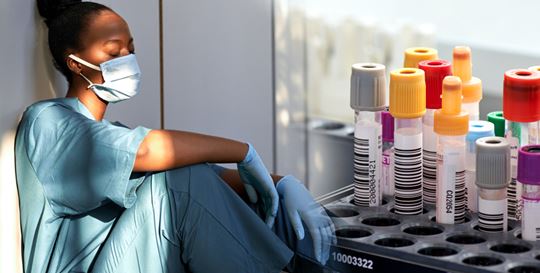Preparing for a potential infectious disease pandemic from a novel coronavirus is an essential component of a business continuity plan, especially for businesses that provide critical healthcare and infrastructure services. Pandemics can not only interrupt an organization’s operations and compromise long-term viability of an enterprise, but also disrupt the provision of critical functions. Businesses that regularly test and update their pandemic plan can significantly reduce harmful impacts to the business and play a key role in protecting associates’ and customers’ health and safety and limit the negative impact of a pandemic on the community and economy.1
In order to keep associates healthy, everyone must do their part. Hand hygiene with soap and water, washing for 20 seconds, and using an alcohol-based hand rub (ABHR) are the most effective, simple and low-cost measures against COVID-19 cross-transmission. By denaturing proteins, alcohol inactivates enveloped viruses, including coronaviruses, and thus ABHR formulations with at least 60% ethanol have been proven effective for hand hygiene.2 Soap contains fat-like substances known as amphiphiles, and the soap molecules “compete” with the lipids in the virus membrane. The chemical bonds holding the virus together aren’t very strong, so competition is enough to break the virus’s coat as well as any grease or dirt they may be clinging to.3
There are no vaccines available and there is little evidence on the effectiveness of potential therapeutic agents. In addition, there is presumably no pre-existing immunity in the population against the new coronavirus and everyone in the population is assumed to be susceptible.4 When a novel virus with pandemic potential emerges, non-pharmaceutical interventions are often the most readily available interventions to help slow transmission of the virus in communities.
Community mitigation is a set of actions that persons and communities can take to help slow the spread of respiratory virus infections. Community mitigation is especially important before a vaccine or drug becomes widely available.5
During this time, it is important to establish clear roles and responsibilities. This can be coordinated through the formation of a crisis management team. This team serves to provide guidance, and support priorities and direction for response and recovery from an enterprise perspective. The establishment of clear roles and communication should take a multi-tiered organizational structure to maximize protection of life and minimize potential interruptions to business continuity. To ensure readiness, the importance of training and tabletop exercises cannot be understated and should be incorporated into overall disaster preparedness efforts.
Mounting a Concerted Defense Against COVID-19
The rapid spread of COVID-19 across the world has exposed major gaps in the abilities of most countries to respond to a virulent new pathogen. Moving forward, as communities work to control the COVID-19 pandemic and plan for future pandemics, a key lesson is that early availability of diagnostic testing is of great value for patient management and public health. Thus, the development, validation, scale-up in manufacture, and distribution of diagnostic tests should be a key priority in early preparation during an emerging infectious disease outbreak.

 English
English





